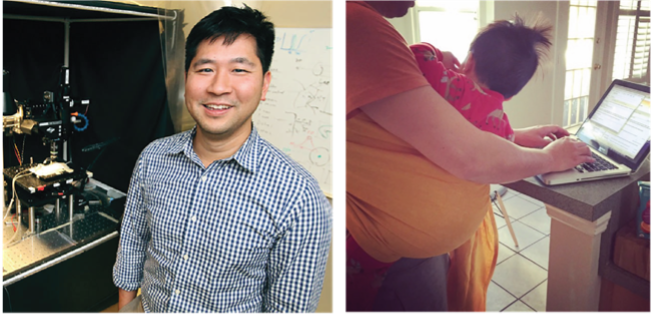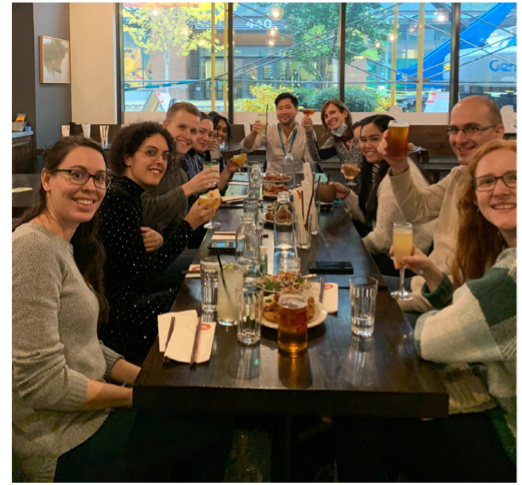New Vision Research Focus - Andy Shih

There are a lot of things they don’t teach you when you start a laboratory. The honeymoon period after getting a faculty position quickly transitions into a balancing act of business administration, mentoring, and family life, all while trying to conduct the most compelling science of your career to win some grants. I was roughly 4 years into this process when I was invited to attend the Charleston Conference of Alzheimer’s Disease (CCAD). Looking back now, there is no doubt in my mind that it was a career-changing experience.
Having the freedom to think about a high risk, “out-of-the-box” project idea sparked a major branch of research in my lab. My idea was focused on cerebral microinfarcts, which are widespread but miniscule lesions caused by occlusion of brain microvessels during cerebral small vessel disease. There was the concept among clinical researchers that microinfarcts were not benign due to their small size. Building on this idea, I proposed that microinfarcts lead to spreading waves of depression that extended far beyond their lesion cores to induce neuronal dysfunction. To test this idea, we would use two-photon imaging of mice expressing genetically-encoded calcium sensors to directly visualize these waves in vivo after occluding small vessels with precise laser-induced clots. The prevalence of these waves and the regions they affected would then be related to long-term neuronal function in tissues surrounding the microinfarcts. I was fortunate to receive a New Vision Award that year. With this encouragement and valuable feedback from researchers in the Alzheimer’s field, it solidified a shift from my research on stroke injury to cerebrovascular contributions to dementia. The work conducted through the New Vision project eventually led to my first successful R01 application.
Equally as valuable as the science, was the chance to meet my peers and make new connections in the Alzheimer’s field. I met 15 amazing young researchers at CCAD, and despite the conference being a competition in essence, I experienced an atmosphere of support, camaraderie, and collaboration (and crabcakes). I remember these times fondly as we enjoyed food and drinks at restaurants and bars throughout historic Charleston. Fast forwarding 7 years, it is amazing to see how quickly things can advance. In 2018, I moved from the Medical University of South Carolina to Seattle Children’s Research Institute. This opportunity challenged me to think more holistically by considering how the cerebrovasculature develops and becomes optimized in function, which is the foundation we need to understand what key functions are lost during aging and Alzheimer’s disease. I am proud to work with a lab of vibrant and motivated trainees. Together, we have planted many new seeds for research and obtained funding to study other aspects of cerebrovascular biology. This includes ongoing projects to examine the role of a fascinating cell type called pericytes that line all brain capillaries and contribute to cerebral hypoperfusion in many age-related diseases.
I am thankful to CCAD for providing such a positive experience at any early career-stage when it is all too easy to become buried in work.

